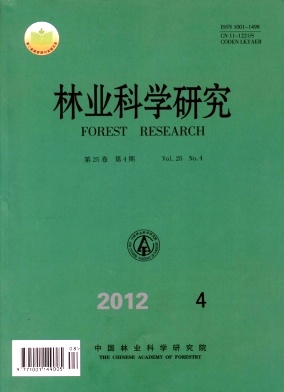|
[1]
|
董 鸣, 于飞海. 克隆植物生态学术语和概念[J]. 植物生态学报, 2007,31(4): 689-698
|
|
[2]
|
顾大形, 陈双林, 郭子武, 等. 四季竹立竹地上现存生物量分配及其与构件因子关系[J]. 林业科学研究, 2011,24(4): 495-499
|
|
[3]
|
Harper J L. Population biology of plant [M]. London and New York: Academic press, 1977 |
|
[4]
|
Golubov J, Mandujano M C, Montana C, et al. The demographic costs of nectar production in the desert perennial Prosopis glandulosa (Mimosoideae): a modular approach[J]. Plant Ecology, 2004,170(2): 267-275 |
|
[5]
|
陈 波, 宋永昌, 达良俊. 木本植物的构型及其在植物生态学研究的进展[J]. 生态学杂志, 2002,21(3): 52-56
|
|
[6]
|
苏建荣, 张志钧, 邓 疆. 不同树龄、不同地理种源云南红豆杉紫杉醇含量变化的研究[J]. 林业科学研究, 2005,18(4): 369-374
|
|
[7]
|
王卫斌, 王达明. 云南红豆杉[M]. 昆明: 云南大学出版社, 2006
|
|
[8]
|
苏建荣, 张志钧, 邓 疆, 等. 云南红豆杉的地理分布与气候关系[J]. 林业科学研究, 2005, 18(5): 510-515
|
|
[9]
|
Lian H L, He S B, Zhang Y C, et al. Blue-light-dependent interaction of cryptochrome 1 with SPA1 defines a dynamic signaling mechanism [J]. Genes & Development, 2011, 25(4):1023-1028 |
|
[10]
|
姜汉侨, 段昌群, 杨树华, 等. 植物生态学[M]. 北京:高等教育出版社, 2010:252-262
|
|
[11]
|
段 劼, 马履一, 贾黎明, 等. 北京地区侧柏人工林密度效应[J]. 生态学报, 2010,30(12): 3206-3214
|
|
[12]
|
徐成立, 张景兰, 陈东来. 树冠圆满度对树木生长的影响及作用研究[J]. 河北农业大学学报, 2005,28(3): 45-48
|
|
[13]
|
Hutchings M J, De Kroon H. Foraging in plants: the role of morphological plasticity in resources acquisition [J]. Advances in Ecological research, 1994, 25: 159-238 |
|
[14]
|
Steingraeber D A. Phenotypic plasticity of branching pattern in sugar maple (Acer sacchrum)[J]. American Journal of Botany, 1982,69: 638-640 |
|
[15]
|
卢康宁, 张怀清, 刘 闽. 基于实测数据的杉木构筑型研究[J]. 林业科学研究, 2011,24(1): 132-136
|
|
[16]
|
何维明, 董 鸣. 异质光环境中旱柳的光截取和利用反应[J]. 林业科学, 2002,38(3): 7-13
|
|
[17]
|
苏艳红, 黄国勤, 刘秀英, 等. 旱地玉米抗旱措施研究进展[J]. 江西农业学报, 2005,17(1): 56-61
|
|
[18]
|
孙书存, 陈灵芝. 辽东栎植冠的构型分析[J]. 植物生态学报, 1999,23(5): 433-440
|
|
[19]
|
张茂钦. 云南红豆杉[M]. 昆明,云南科技出版社, 2006
|
|
[20]
|
Gillespie A R, Allen H L, Vose J M. Amount and vertical distribution of foliage of young loblolly pine trees as affected by canopy position and silvicultural treatment [J]. Canadian Journal of Forest Research, 1994,24: 1337-1344 |
|
[21]
|
徐程扬. 不同光环境下紫椴幼树树冠结构的可塑性响应[J]. 应用生态学报, 2001,12(3): 339-343
|





 DownLoad:
DownLoad: